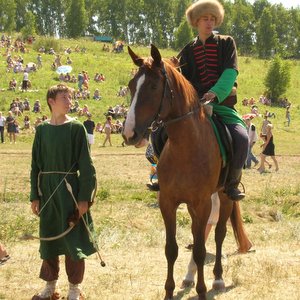“This year Samara region will host a major international archaeological project to discover the exact place of one of the most important events in the history of the Russian Middle Ages – the battle between the armies of Central Asian Amir Timur and the Khan of the Golden Horde Tokhtamysh. This large-scale battle, which may be considered the start of a decline of the Golden Horde era, occurred in 1391 in what is now the Samara region; however, scientists have not yet been able to establish where exactly the battlefield lay, and offer widely different versions. Our project seeks to solve this historical mystery by excavations which are to provide artifacts as evidence and thus put an end to the old scientific dispute. Scientists from our university will collaborate with colleagues from the Shigabutdin Marjani Institute of History and Alfred Khalikov Institute of Archaeology of the Tatarstan Academy of Sciences, as well as the Kazan, Kurgan and Bashkir State Universities. Scientists from Samarkand State University and Yahya Gulyamov Samarkand Archaeological Institute expressed strong interest in joining the international project. It has also attracted attention of archaeologists from Kazakhstan, Azerbaijan, Iran and Israel. I would like to emphasize the involvement of community organizations of Samara region – representatives of the Council of Tatar Local Historians of Samara region and Samara regional Tatar national cultural autonomy take part in the project,” said Sergey Zubov, head of the R&D laboratory of archeology at Samara University.
According to him, the project’s intended span is five years and it aims at a detailed study of the military campaigns of Timur and Tokhtamysh. Archaeological research and expeditions to different areas of Samara region are envisaged. Localization of the battle site and search for bivouacs location will be performed using the instrumental base of Samara University archaeologists, including new equipment purchased at the end of last year with the funds obtained through the university’s participation in the “Priority 2030” strategic academic leadership program. Among the new equipment is a modern total station used by archaeologists to make a topographical plan and build a 3D models of the area, and a copter for surveying and examining the excavation site from above.
Apart from archaeologists and historians, the project will involve chemists, optic physicists, geophysicists, biologists and specialists of other scientific fields of Samara University.
For reference:
In 1391, Timur went on a campaign against Tokhtamysh, who had previously launched a series of raids on Timur’s possessions. In June 1391, Timur’s army of 200,000 soldiers overtook the retreating Tokhtamysh in the territory of the current Samara region, and the famous battle took place, in which the army of Tokhtamysh was defeated and Khan himself fled. Four years later, Timur dealt a final blow to Tokhtamysh by defeating his army in a battle on the Terek River. According to most historians, the defeats of Tokhtamysh in the battles of 1391 and 1395 were fatal for the Golden Horde and marked its decline.
According to him, the project’s intended span is five years and it aims at a detailed study of the military campaigns of Timur and Tokhtamysh. Archaeological research and expeditions to different areas of Samara region are envisaged. Localization of the battle site and search for bivouacs location will be performed using the instrumental base of Samara University archaeologists, including new equipment purchased at the end of last year with the funds obtained through the university’s participation in the “Priority 2030” strategic academic leadership program. Among the new equipment is a modern total station used by archaeologists to make a topographical plan and build a 3D models of the area, and a copter for surveying and examining the excavation site from above.
Apart from archaeologists and historians, the project will involve chemists, optic physicists, geophysicists, biologists and specialists of other scientific fields of Samara University.
For reference:
In 1391, Timur went on a campaign against Tokhtamysh, who had previously launched a series of raids on Timur’s possessions. In June 1391, Timur’s army of 200,000 soldiers overtook the retreating Tokhtamysh in the territory of the current Samara region, and the famous battle took place, in which the army of Tokhtamysh was defeated and Khan himself fled. Four years later, Timur dealt a final blow to Tokhtamysh by defeating his army in a battle on the Terek River. According to most historians, the defeats of Tokhtamysh in the battles of 1391 and 1395 were fatal for the Golden Horde and marked its decline.
According to written sources of the period, the battle of 1391 took place in the area called Kunduzcha; this name is unanimously interpreted by historians as the river Kondurcha. The Kondurcha is about 300 km long and exact location of the battle remains unknown. Some scientists believe that the battle took place between the rivers Sok and Kondurcha, others – near the village of Stary Buyan, Krasnoyarsk district, others – near the village of Koshki, the name deriving from the Turkic word “kosh” – “camp of shepherds, military camp”. No physical evidence of the battle has yet been found.
Photo: Elena Pamurzina
Photo: Elena Pamurzina
 RU
RU  EN
EN  CN
CN  ES
ES 